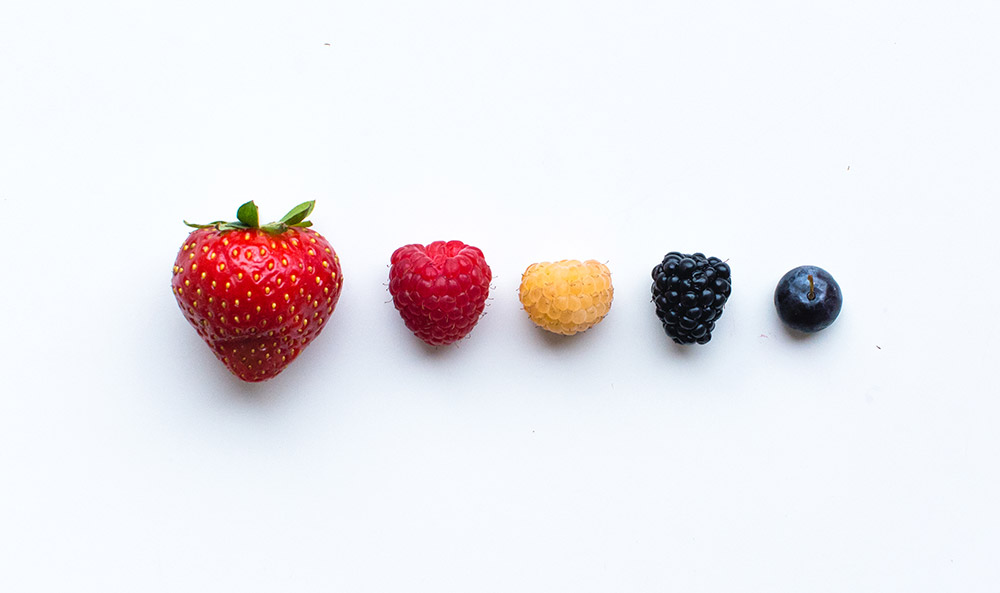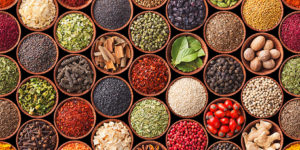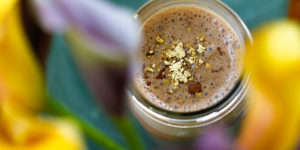Big Health Benefits in Small Packages:
7 Healing Berries With Powerful Health-Boosting Properties
BY KIRSTEN HARTVIG
 the health benefits of berries, especially when compared to other everyday foods, are truly extraordinary.
the health benefits of berries, especially when compared to other everyday foods, are truly extraordinary.
1. Goji Berry
(Lycium barbarum)
Goji berries, also known as wolfberries, have been used in Asia as food and medicine since the discovery of the health benefits of these berries in 2800 bc, and traditionally they were used to increase longevity and to treat poor
The goji plant belongs to the nightshade family (Solanaceae) and is a deciduous woody perennial climber, growing up to 3m/10ft high. Bell-shaped flowers appear during the summer and are lavender or light purple in color. The elongated berries are bright crimson when they ripen in late summer or early autumn, and are about 1–2cm/½–¾in long. Gojis are true berries in the botanical sense, each containing between 10 and 60 tiny yellow seeds. Ripe gojis are difficult to harvest as they bruise easily, so it is best to shake them gently into trays and dry them slowly, out of direct sunlight, with minimum handling in order to get the best health benefits of these berries.
As a food, goji berries can be eaten dried, juiced or extracted in alcohol. Dried goji berries taste like a combination of raisins and cranberries and are a tasty and healthy addition to any meal. The health benefits of these berries are in that they are high in protein (36%) and fiber, and in vitamins C and B1, as well as calcium and iron.
Research into the health benefits of goji berries has concentrated mainly on their L.barbarum polysaccharide (LBP) content. LBP has been shown to help reduce body weight, and clinical trials on diabetics have suggested that it also improves circulation and immunity. Goji berries contain carotenoids, including lutein, which may prevent oxidative damage to the retina of the eye, and they also contain flavonoids, phenolic acids and other powerful antioxidants.
Eating goji berries stimulates the immune system, lessens inflammation and can speed up recovery after chemotherapy or radiation. Studies involving cancer patients have shown inhibited growth or regression of cancer cells, and goji berries have also been shown to alter oestradiol metabolism, and may thus affect female hormonal cancers in a positive way. Other clinical studies suggest that other benefits of eating goji berries increases energy levels, stamina and endurance; improves sleep quality and mental alertness; and reduces the incidence of headache, depression and memory loss.
2. Elderberry and Blue Elderberry
(Sambucus nigra and Sambucus caerulea)
The elderberry tree used to belong to the honeysuckle family (Caprifoliaceae) but has recently been included in the moschatel family (Adoxaceae). This healthy berry is easy to recognize in the summer with its cheerful clusters of white flowers and its aromatic, slightly acidic scent. As autumn approaches, the flowers turn into beautiful green, true berries that change color as they ripen, becoming white, then red and finally, indigo-black. The ripe berries are very popular among wild birds and animals, and in Scandinavia they are bottled and used to make cordials and elderberry soup.
The Romans used elderberry juice as a hair dye, a practice that continued into the Middle Ages with renowned herbalist Nicholas Culpeper writing that ‘the hair of the head washed with the berries boiled in wine is made black’. Other health benefits of berries were their efficacy against rheumatic complaints and skin infections. Elderberry juice was used to treat arthritis and syphilis, and as a laxative, since it was thought ‘to promote all fluid secretions and natural evacuations…’.
Phytonutrients
Analysis reveals that 100g/3½oz of elderberries provide 47 calories, and contain 6% protein, 9% fat, 57% carbohydrate and 28% fiber. There are many health benefits of these berries as they are rich in vitamin C (34% RDA), vitamin A (8% RDA) and iron (11% RDA), and also contain vitamins B1, B2, B3, B5 and B6, folate, biotin, potassium and calcium, together with flavonoids, anthocyanins, rutin, quercetin, viburnic acid, tannins and glycosides.
Qualities
Once a staple ingredient in many North American and European dishes, the health benefits of berries have been overlooked in recent years as people have moved away from growing and gathering food for themselves. Elderberries contain potent, antiviral phytochemicals, which can relieve the symptoms of colds and influenza. They are also thought to be effective against herpes and other immune deficiency disorders. Recent studies suggest that the flavonoids in elderberries may be more effective than Tamiflu in treating the symptoms of flu viruses.
Availability and Storage
As fresh elderberries do not keep well, they are rarely found for sale in shops or markets. Pick them in the wild or grow your own. The berries are ripe when the clusters start to point downward. Cut or break off whole stalks and rinse well. It’s easier to strip the berries from their stems once they are frozen, so freeze elderberries at this stage if you wish. Dry them off well before placing in the freezer in an airtight bag or container, taking care not to squash them. De-stem them while they are frozen by pushing them off with a fork. Occasionally you can buy elderberries frozen or dried, or in food products and drinks, and they should retain the health benefits of fresh berries.
Culinary Uses
Nibble raw, ripe elderberries directly from the tree, or use them in pancakes, waffles, pies, muffins, sauces, soups, salads, juices and smoothies. The fresh, healthy berries can taste slightly bitter, but this can be countered by adding a little lemon juice or some sour apples. They can also be dried or preserved in wine, syrup, cordial, jelly and jam.
3. Jujube/Chinese Date
(Ziziphus Jujuba)
A shrub of the buckthorn family (Rhamnaceae), the jujube originated in China, where it has been cultivated for over 4,000 years for the incredible health benefits of this berry. It is now grown throughout southern Asia, India, the Korean peninsula and southeastern Europe.
Fresh and candied healthy berries are popular as snack foods, and dried jujubes are good in desserts and drinks. For cooking in recipes, look for pitted, dried jujubes and rinse or soak before use. Tea bags and juices are available in health food stores and Chinese food stores.
A jujube decoction (made by simmering the berries in water for 5–10 minutes) can be used to treat sore throats and colds, and the pulp of the fruit can be applied to cuts and wounds and used as a skin cleanser, to improve skin color and tone. Many cultures utilize the health benefits of these berries. In Arabian traditional medicine, the jujube was said to cure coughs, resolve lung complaints, soothe internal organs and reduce water retention. Dried ripe jujube berries also work as a mild laxative. In India and Pakistan, they are used as a blood cleanser, a tonic and a general preventer of disease.
In Chinese medicine, the jujube is prescribed to relieve stress and increase stamina. It is thought of as a qi tonic and is said to aid liver function and help recovery from hepatitis and other liver diseases. These healthy berries are also used to relieve the emotional upset and debility caused by psychological illness, and its mild sedative action makes it useful for treating nervousness, restlessness and irritability. The jujube berry is rich in vitamins A, C and B2, and in the minerals calcium, phosphorus and iron. It also contains saponins, flavonoids and mucilage.
4. Kiwi Fruit / Chinese Gooseberry
(Actinidia deliciosa)
The kiwi fruit, or Chinese gooseberry, is a true healthy berry with rough brownish skin, juicy bright green or golden flesh and black edible seeds. Roughly the size of a hen’s egg, it is unrelated botanically to the gooseberry family, although it does come originally from China, where it is the national fruit. Seeds were taken to New Zealand in 1904 and bore their first fruits there in 1910. With its refreshing, gooseberry-like taste and many health benefits, the berry became increasingly popular, and New Zealand began exporting to the United States in the 1950s.
With the Cold War in full swing, however, anything Chinese was regarded with suspicion, so New Zealand growers had the idea of renaming it ‘kiwi fruit’ after the round, furry, brown flightless bird that is their national symbol (and could be said to resemble a Chinese gooseberry). ‘Kiwi’ is also a colloquial name for New Zealanders.Phytonutrients
Analysis reveals that 100g/3½oz of kiwi fruit provide 58 calories, and contain 8% protein, 8% fat, 72% carbohydrate and 12% fiber. The health benefits of these berries are that they are very high in vitamin C (74% RDA) and rich in vitamins B6, E and K, potassium and magnesium. They also contain chlorophyll, flavonoids, actinidin, calcium oxalate and arotenoids betacarotene, lutein and zeaxanthin (especially in the gold kiwi fruit). The abundant edible seeds have a high omega-3 fatty acid content.
Qualities
Kiwi fruit stimulate the immune system and are good for the skin and mucous membranes, and because of their high fiber content, they can be effective against constipation. A kiwi has many other health benefits of a berry and can help prevent or relieve high blood pressure and other cardiovascular problems, and can also help to improve sleep and relaxation.
The actinidin in kiwi fruit is one health benefit of this berry; a protein-dissolving enzyme that can aid digestion in the same way as papaya and pineapple. It also acts as a blood thinner, reducing platelet aggregation, blood fat levels and the risk of blood clots. Actinidin is also used to tenderize meat before cooking. The downside to actinidin is that it dissolves protein in dairy and gelatin, making kiwi fruit hard to use in many desserts, although the popular New Zealand version of pavlova consists of meringue and whipped cream topped with fresh kiwi slices.
5. Cherry
(Prunus avium and Prunus cerasus)
Although shaped like a berry, a cherry contains just a single stone, so by botanical definition it is really a drupe belonging to the rose family (Rosaceae). Cherries ripen in the early summer and are among the first fresh berries of the season. Fresh, locally grown cherries are available for only a very short season because they ripen almost simultaneously on the tree, but as they are grown commercially in both the Northern and Southern Hemispheres, these healthy berries are always in season somewhere in the world.
Phytonutrients
Analysis reveals that 100g/3½oz of cherries provide 48 calories, and contain 7% protein, 3% fat, 82% carbohydrate and 8% fiber. These berries’ health benefits also come from vitamins C (14% RDA), B1, B5 and B6, folate, potassium and magnesium. They have a high melatonin content and are packed with antioxidants, especially anthocyanin, melanin, flavonoids (lutein, zeaxanthin, carotenoids), phenols and quercetin.
Qualities
The anthocyanins in cherries have been shown to be powerful anti-inflammatory agents, capable of reducing pain and swelling from gout, arthritis, fibromyalgia and injuries. The health benefits of these berries can also help the body to fight cancer, neurological problems, cell deterioration and diabetes. Flavonoids act as protective scavengers against free radicals, reducing the risk of heart disease, cancer and other chronic disease processes.
Eating cherries or drinking cherry juice can help to improve your natural sleep cycle. Another health benefit of these berries is that they can also be a good remedy for insomnia as melatonin, a natural hormone produced by plants, animals and people, plays a key role in regulating the internal body clock. In addition, melatonin helps maintain optimum brainpower and may slow the development of age-related chronic diseases, such as Alzheimer’s. The combination of melatonin and anthocyanins makes cherries an excellent brain food. Cherries are good to eat as a snack when dieting or on a weight control regime, and can help to reduce joint pain and inflammation after vigorous exercise.
Availability and Storage
Pick cherries in the wild; grow your own healthy berries; or buy them fresh, dried, tinned, pickled or frozen, or in food products or drinks. Bright, shiny cherries with green stalks firmly attached can be refrigerated for about a week. Rinse just before eating, or you can freeze rinsed and dried whole cherries for up to a year.
Culinary Uses
Cherries make excellent snacks and are good in salads, drinks, juices, syrups, cakes, ice cream, chocolates and desserts.
Varieties
There are countless species of cherries, but the two most popular types of these healthy berries are the sweet cherry (Prunus avium) and the sour cherry (P. cerasus). Other varieties include Alabama cherry (P. alabamensis), clove cherry (P. apetala), bell-flowered cherry (P. campanulata), greyleaf cherry (P. canescens), Carolina cherry laurel (P. caroliniana), wild Himalayan cherry (P. cerasoides), Oregon cherry or bitter cherry (P. emarginata), European/Asian bird cherry (P. padus), black cherry (P. serotina), Tibetan cherry (P. serrula), Hokkaido bird cherry (P. ssiori), Korean mountain cherry (P. verecunda), chokecherry (P. virginiana) and Yoshino cherry (P. x yedoensis).
6. Indian Gooseberry/Amla
(Emblica officinalis syn. Phyllanthus emblica)
The Indian gooseberry is also known as amla, from the Sanskrit word amalika, meaning ‘sour juice of the fruit’, an apt description of the berry’s taste, which is sour, bitter and astringent. However, this berry is highly valued by nutritionists and practitioners of Ayurvedic medicine for the many health benefits of the berries, and is commonly eaten as a pickle in India, where it is a very important source of vitamin C. It is also the main ingredient in a 5,000-year-old rejuvenating herbal tonic known as chayavan prash, recorded in early Ayurvedic medical texts and still used today.
Indian gooseberries belong to the leaf flower family (Phyllanthaceae) and grow on a deciduous tree that has a crooked trunk and feathery, light green leaves closely set along its spreading branches. These healthy berries grow wild in the forests and coastal regions of India and Kashmir. The flowers that precede the berries are lime green to pale yellow in color and, when ripe in the autumn, the juicy berries are also light green, round, smooth and hard with six vertical furrows or stripes, resembling round gooseberries.
Raw amla is a berry with many health benefits because it is extremely rich in easily absorbable vitamin C, and medical studies suggest that amla has antiviral, as well as antibacterial and antifungal properties. In Ayurvedic medicine, it is thought of as a good liver stimulant with cooling, gently laxative properties. Research from Japan suggests that amla is a potent scavenger of free radicals, thus enhancing cellular regeneration during cancer treatment. It also acts as an immune booster against colds, influenza and chronic lung disease such as tuberculosis. Some recent studies have shown that it may have potential for lowering blood cholesterol and helping to balance blood sugar levels in diabetes. Indian gooseberries can be eaten raw, cooked, pickled with salt, oil and spices, or soaked in syrup.
7. Persimmon
(Diospyros)
Also known as Sharon fruit, date plums and kaki, persimmons are the edible fruits (berries, in botanical terms) of a number of species belonging to the ebony family (Ebenaceae). The Greek name diospyros means ‘fruit of the gods’, and these healthy berries really do have a delicately divine taste that justifies their nickname ‘nature’s candy’.
The persimmon tree is quick-growing, deciduous and attractive. It can reach up to 8m/26ft in height and prefers mild climates with moderate winters and mild summers. It is one of the last trees to bloom in spring, with flowers that appear after the leaves, and fruits that ripen in the autumn, hanging off the branches long into winter, after the leaves have fallen. The most commonly produced persimmons, from Diospyros virginiana, are light to dark orange in color, and vary in size. There are many other varieties of this healthy berry native to different parts of the world, from the Americas to Asia, North Africa and Europe. The leading producers of persimmons are China, Japan, Korea, Brazil, Italy, New Zealand, Iran, Australia and Mexico, and commercial growers concentrate on just two varieties: the astringent and the non-astringent. The astringent variety is high in tannins and commonly grown in Japan. It needs to ripen fully and become jelly-soft before it is ready to eat. The non-astringent variety contains less tannin and has a crisp consistency, similar to pears and apples.
High in sugar and fiber, rich in vitamins A and C, and with a good content of vitamins E and B6, potassium, copper and manganese, persimmons contain important antioxidant flavonoids such as catechins, betulinic acid, beta-carotene, lycopene, lutein and xanthins, there are many health benefits of this berry. Catechins are known to have antibacterial and anti-inflammatory properties, and can improve capillary wall integrity, thus preventing bleeding from small blood vessels. Vitamin C helps the body resist infectious diseases and, together with the other antioxidants, helps protect body cells against deterioration and ageing.
Recipe: Goji Pilaf
A pilaf is a rice dish cooked in stock. The name is derived from the Sanskrit pulaka, meaning ‘shriveled grain’, and the practice may have started as a way of adding flavor to old rice. Try replacing the goji berries with barberries, which are also a traditional ingredient in pilaf. Barberries look like goji berries but are smaller and give a slightly sharp, tart flavor.
Preparation and cooking time: 35 minutes | Calories per portion: 377
Serves 4
+ 1 tbsp olive oil
+ 250g/9oz/1¹⁄3 cups long-grain rice
+ 750ml/26fl oz/3 cups vegetable stock
+ 100g/3½oz dried goji berries
+ 200g/7oz dried mulberries
+ 5 cardamom pods, lightly crushed
+ 1 tsp turmeric
+ 1 cinnamon stick
+ 1 orange, unpeeled, cut into small thin segments
+ 100g/3½oz/¾ cup almonds, chopped and toasted sea salt and freshly ground black pepper
Heat the oil in a large sauté pan and stir-fry the rice for 1 minute. Add the stock, berries and spices. Bring to the boil, then turn the heat down to low, cover and simmer very gently for 25 minutes, or until all the liquid is absorbed. Season to taste, then stir in the orange segments. Heat through, sprinkle with almonds and serve hot or cold.
Nutrition Profile (per portion)
13% protein, 36% fat, 47% carbohydrate, 4% fiber
Vitamins and Minerals (percentage of RDA)
Vitamin E 44%, C 22%, B1 26%, B2 15%, B3 21%, B5 16%, B6 22%, folate 18%, biotin 26%, potassium 21%, calcium 14%, magnesium 35%, iron 37%, zinc 17%, copper 38%, selenium 21%
Health Benefits
Benefits circulation and immune function | aids recovery after cancer treatment | may help prevent neurodegenerative problems and hormone-related cancers
This piece on the health benefits of berries is extracted from Healing Berries by Kirsten Hartvig © Kirsten Hartvig 2016 published by Nourish Books, London.
About The Author
Kirsten Hartvig is a registered naturopath, medical herbalist, nutritionist and author of 14 books on healthy eating and natural health. She practices at the Riverside Practice in Forest Row, UK and runs health retreats in the French Pyrennees. She also gives workshops and lectures on the healing power of plants. Visit her website here: kirstenhartvig.com






















